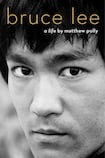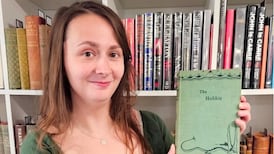
There’s an anecdote in Matthew Polly’s solid, if unspectacular, door stopper of a biography on Bruce Lee that sums up the kung fu star’s ambition, vision, commitment and, ultimately, ruthlessness.
Lee convinced Chuck Norris to appear in The Way of the Dragon by saying their fight would be the highlight of the film, even though Norris was unhappy he would have to lose. Both men had a genuine friendship, though, so Norris got on board.
“How do you want me to prepare?” he asked Lee.
“What do you weigh?’ Lee wondered.
“162 or 163[lb].”
“I’m almost 140,” Lee said, “I want you to gain 20 pounds.”
“There’s only three weeks before filming,” Norris protested. “Why?”
“It will make you look a more formidable opponent.”
As Polly relates, this may have been true. But it also wouldn't have been lost on Lee – who had extensive television and film experience compared with the novice Norris – that those 20lb would soften Norris's muscular definition compared with Lee's physique on camera. As Bob Wall, who played O'Hara in Enter the Dragon, said: "One of the reasons Chuck doesn't like to talk about The Way of the Dragon is because he thinks he looks like a fat moose." One-nil to Bruce, in what is one of the greatest martial arts scenes in cinematic history.
I longed for more moments such as this while reading A Life. Some will wonder at 650 pages on an entertainer who probably has little relevance to anyone born in the new millennium; Bruce Lee in all likelihood will only appeal to blokes of a certain vintage. Polly's book could prove too much for someone with a casual interest, even, and it will certainly hold little appeal to anyone else. However, if you are a Lee fan, as I am, you will be glad to see his life and work given permanence and fresh appraisal. Lee remains an important cultural figure for a number of reasons, which Polly covers competently with thorough research.
Short career
The astonishing thing about Bruce Lee is how he became a global star in a handful of movies in the space of a few years (he appeared as a child actor in a number of Cantonese films). His filmography is slight: The Big Boss (1971); Fist of Fury (1972); The Way of the Dragon (1972); Enter the Dragon (1973). It's best not to include Game of Death, which was stitched together after Lee's death from footage he had filmed for a project that was postponed once Hollywood finally backed him with Enter the Dragon. The 20 minutes or so featuring Lee are electric, but the remainder of the film, with its ridiculous lookalikes and butchered editing, make it a form of movie malpractice at best.
Lee transcended film when we think of the countless people who started practising some form of martial art after watching him. Even the fat Elvis found it hip. Dying young also smoothed Lee's path to the pantheon of cinematic greats. He passed away aged 32 in 1973, shortly before Enter the Dragon was released, and missed his sudden ascent to international stardom. The film was a massive success: costing less than $1 million to make, it brought in $90 million the year of its release, and has made Warner Bros. $450 million since then. Lee's sudden passing, in what seemed the prime of his life and at peak fitness, generated its own mystery and conspiracies that have rumbled on to the present day (Polly's account is particularly strong in this section).
Racial barriers
The fact that Lee broke through racial barriers in the film industry cannot be underestimated either, considering that the consensus among movie producers in the 1960s was that an ethnic actor would not have the pull or capability to carry a leading role. To give a flavour of this era, in the early 1960ss the Seattle Times shamefully featured a profile of Bruce with the headline "Lee Hopes for Rotsa Ruck".
If we combine these achievements with the many dubious biographies that have gone before, the legend of Bruce Lee was overdue the definitive, big book treatment. So, does the author deliver? Yes and no. The book is literally big, even if 150 pages are notes, bibliography and so on, and it is a thoroughly researched account from cradle to grave. Yet one feels that the book never gets to the heart of its subject, or dedicates enough space to the reason why we continue to love Lee: the magic of his films, which are covered in little more than 100 pages. Polly interviews plenty of voices who knew his subject well, including Lee’s wife Linda, yet they feel noncommittal at times. Reading a biography, you wish to feel like you are living with its subject for a spell. But little magic comes off the page in Polly’s writing, which too often can seem procedural. To channel Bruce a little here, the book needed to focus a little more on the moon, to balance the finger pointing towards it, to allow the reader see all the heavenly glory that was Bruce Lee.










